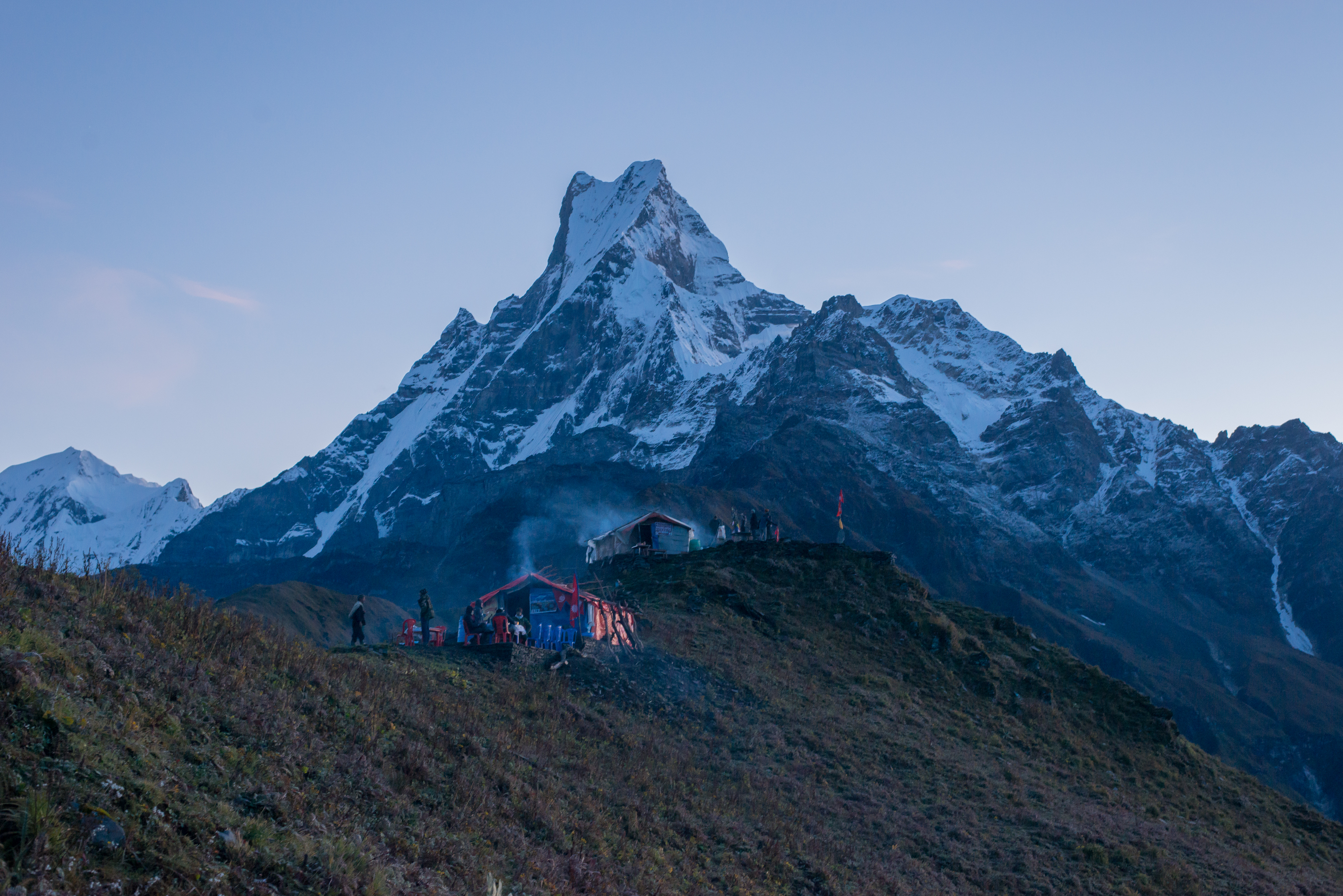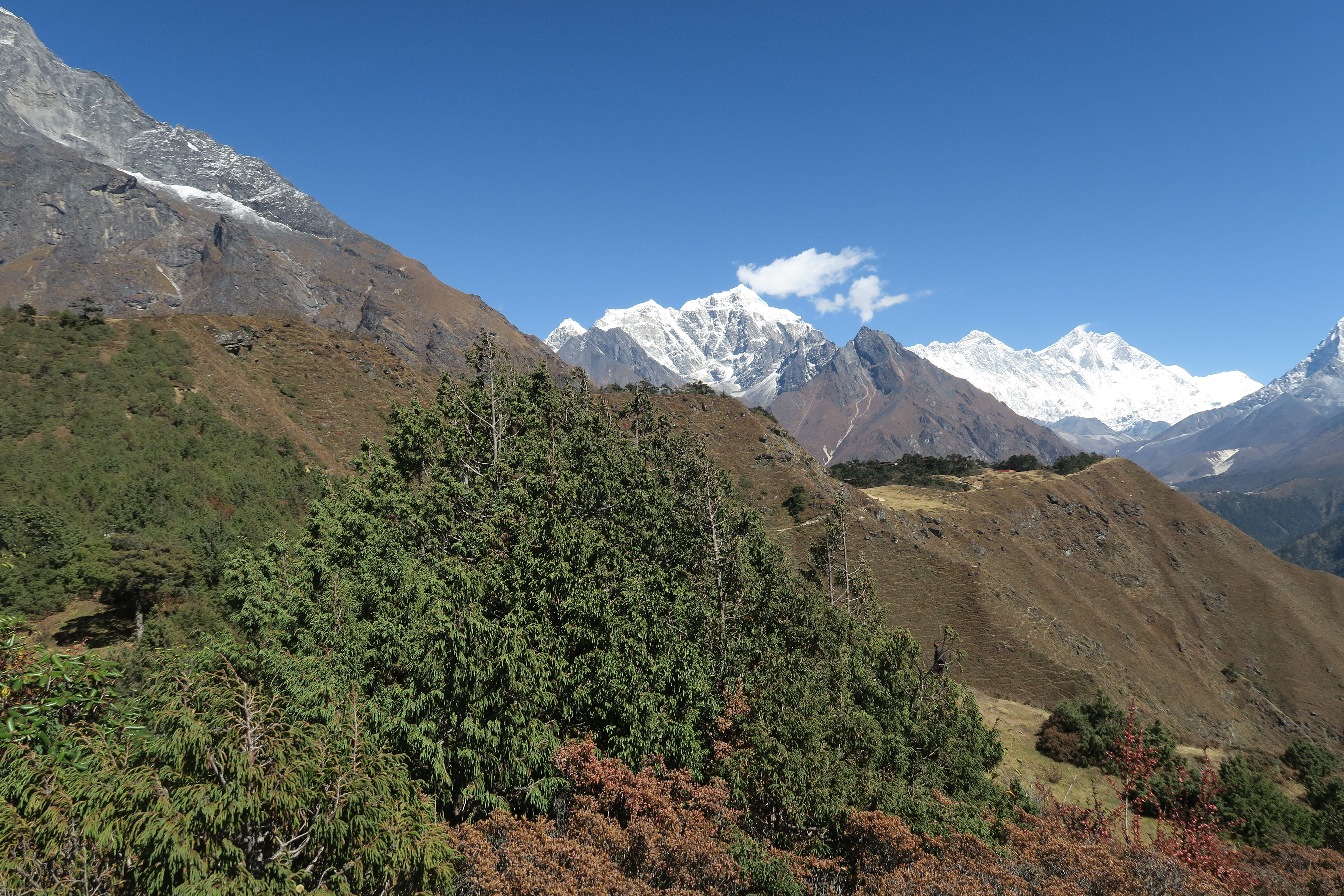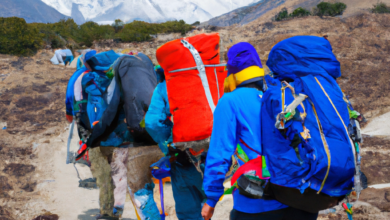ArticleTrekking in nepal
The Ultimate Guide to Hiring Trekking Guides and Porters in Nepal

Nepal is a well-known trekking destination that draws thousands of trekkers every year. The nation offers some of the most breathtaking and difficult treks in the world, with a variety of landscapes, breathtaking Himalayan views, and rich cultural experiences. The following are a few of the most well-liked trekking destinations in Nepal:
One of the most renowned and challenging treks in the world is the Everest Base Camp Trek. You will pass through the breathtaking Khumbu Valley on this trek, which offers breathtaking views of the Himalayan mountain range, including Mount Everest, the highest peak in the world.
Annapurna Circuit Trek
One more well-liked trekking route in Nepal is the Annapurna Circuit Trek. With breathtaking views of the Annapurna range, this trek takes you through a variety of landscapes, including dense forests, small towns, and high mountain pass.
Langtang Valley Trek
A less popular but no less rewarding trekking route in Nepal is the Langtang Valley Trek. On this trek through the Langtang National Park, you can experience the local Tamang culture and enjoy breathtaking views of the Langtang range.
Manaslu Circuit Trek
The Manaslu Circuit Trek is a strenuous trek through remote areas of Nepal that offers breathtaking views of the Himalayan range and the chance to immerse yourself in the local culture.
Upper Mustang Trek
A unique trekking destination in Nepal that provides a glimpse into ancient Tibetan culture and civilization is the Upper Mustang Trek. In addition to providing breathtaking views of the Nilgiri and Dhaulagiri ranges, this trek takes you through the wild areas of the Mustang region.
Nepal offers a wide variety of other treks in addition to these well-known trekking locations, each with its own distinct rewards and challenges. Nepal has something to offer everyone, whether you are a novice or an expert hiker.
Importance of trekking guides and porters in Nepal
The success and safety of any trekking adventure in Nepal are greatly influenced by the guides and porters. They offer invaluable insights into the regional culture and traditions in addition to providing expert guidance and navigation through difficult terrain.
For anyone looking to explore the Himalayas, trekking guides in Nepal are an invaluable resource because they are experienced professionals who have a thorough understanding of the geography, climatic conditions, and trekking routes in the area.
Similarly, porters are essential for transporting bulky supplies and equipment, freeing trekkers from worrying about the weight of their equipment and allowing them to concentrate on the trek itself. In general, trekking guides and porters are priceless assets that improve the trekking experience in Nepal and guarantee trekkers’ security and comfort.
Trekking guides in Nepal
Trekking guides in Nepal are qualified experts who assist and advise hikers throughout their trekking expeditions in the Himalayas. They are essential in ensuring trekkers’ safety, comfort, and progress throughout their journey. In Nepal, trekking guides should have the following qualities:
Who is a trekking guide?
A trekking guide is a trained professional who provides assistance, guidance, and support to trekkers during their trekking adventures in Nepal.
They are responsible for leading the way, navigating through the terrain, and providing valuable insights into the local culture and traditions.
Qualifications and requirements to become a trekking guide in Nepal
To become a trekking guide in Nepal, one must meet certain qualifications and requirements. These include:
- completion of high school education or equivalent
- Completion of a trekking guide training program approved by the Nepali government
- Knowledge of the local culture, traditions, and geography of the trekking route
- Fluency in English and Nepali
- Good physical fitness and stamina
Responsibilities of a trekking guide
Trekking guides in Nepal have several responsibilities, including:
- Leading the way and navigating through the terrain
- Providing valuable insights into the local culture and traditions
- Ensuring the safety and well-being of trekkers
- Monitoring the health and physical condition of trekkers
- Organizing food, accommodation, and transportation during the trek
- communicating with local authorities and emergency services if necessary.
- Managing any unforeseen circumstances or emergencies that may arise
Benefits of hiring a trekking guide in Nepal
Hiring a trekking guide in Nepal has several benefits, including:
- Expert guidance and support during the trek
- Access to valuable insights into the local culture and traditions
- Enhanced safety and security during the trek
- Assistance with organizing food, accommodation, and transportation
- Support in the case of any unforeseen circumstances or emergencies
- A more immersive and rewarding trekking experience
Overall, trekking guides in Nepal are an essential resource for anyone seeking to explore the Himalayas. They provide invaluable guidance and support, making the trekking experience safer, more comfortable, and more rewarding.
Porters in Nepal
Porters in Nepal play an essential role in the trekking industry. They are responsible for carrying heavy equipment and supplies, allowing trekkers to focus on the trek itself without worrying about the weight of their gear. Here are some key aspects of porters in Nepal:
Who is a porter?
A porter is a person who is hired to carry equipment and supplies during a trekking adventure in Nepal. They are responsible for transporting the gear from one location to another, usually on their backs or with the help of pack animals.
Qualifications and requirements to become a porter in Nepal
To become a porter in Nepal, one must meet certain qualifications and requirements. These include:
- Good physical fitness and stamina
- ability to carry heavy loads
- Knowledge of the local geography and trekking routes
- Good communication skills
- familiarity with trekking gear and equipment
Responsibilities of a Porter
Porters in Nepal have several responsibilities, including:
- Carrying heavy equipment and supplies during the trek
- Loading and unloading equipment and supplies at each stop along the way
- Assisting with setting up and breaking down campsites
- ensuring the safety and security of the equipment and supplies
- Communicating with the trekking guide and other porters
Benefits of hiring a porter in Nepal
Hiring a porter in Nepal has several benefits, including:
- reducing the physical burden on trekkers, allowing them to focus on the trek itself.
- ensuring the safety and security of equipment and supplies during the trek
- Providing employment opportunities for local people
- Supporting the local economy in the trekking region
- Enhancing the overall trekking experience by allowing trekkers to travel more comfortably
Overall, porters in Nepal are an important resource for anyone seeking to explore the Himalayas. They provide invaluable support and assistance, making the trekking experience safer, more comfortable, and more rewarding.
Cost of Hiring Trekking Guides and Porters in Nepal
While hiring a trekking guide or porter in Nepal can enhance your trekking experience, it’s important to consider the cost. Here are some key aspects of the cost of hiring trekking guides and porters in Nepal:
Factors affecting the cost of hiring a trekking guide or porter in Nepal
Several factors can affect the cost of hiring a trekking guide or porter in Nepal, including:
- The duration of the trek
- The difficulty of the trek
- The number of trekkers in the group
- The experience and qualifications of the guide or porter
- The level of support and services required
The average cost of hiring a trekking guide or porter in Nepal
The average cost of hiring a trekking guide or porter in Nepal varies depending on the factors mentioned above. Generally, the cost can range from $25 to $35 per day for a porter and from $30 to $150 per day for a trekking guide.
Tips for negotiating prices with trekking guides and porters in Nepal
Here are some tips for negotiating prices with trekking guides and porters in Nepal:
- Research the average cost of hiring a guide or porter before negotiating.
- Consider hiring a guide or porter through a reputable agency, as they may have more fixed prices.
- Be clear about your budget and expectations before starting negotiations.
- Consider offering a fair price that reflects the experience and qualifications of the guide or porter.
- Keep in mind that the price should include food, accommodation, and other basic necessities for the guide or porter.
Overall, while hiring a trekking guide or porter in Nepal can be a significant expense, it’s worth the investment for the enhanced experience and support they provide. By considering the factors that affect the cost and negotiating fairly, you can ensure that you are getting the best value for your money.
Conclusion
In conclusion, trekking guides and porters are crucial resources for anyone looking to trek in Nepal. They provide support and assistance, making the trekking experience safer, more comfortable, and more rewarding. Trekking guides offer valuable knowledge and experience of the trekking routes and local culture, while porters reduce the physical burden on trekkers and ensure the safety and security of equipment and supplies.
When it comes to the cost of hiring trekking guides and porters in Nepal, it’s important to consider the factors that affect the cost, such as the duration and difficulty of the trek, the experience of the guide or porter, and the level of support required. Negotiating fairly and offering a fair price that reflects the experience and qualifications of the guide or porter is also important.
Overall, while hiring trekking guides and porters in Nepal may be a significant expense, it is a worthwhile investment that can enhance your trekking experience and support the local economy. By hiring guides and porters through reputable agencies and negotiating fairly, you can ensure that you are getting the best value for your money while supporting the local communities.







